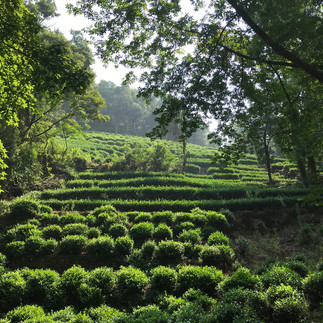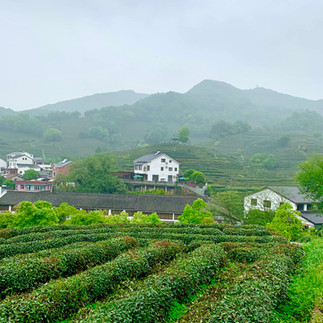Tea Villages
- natasavujicic
- Jul 12, 2023
- 4 min read
Updated: Feb 6, 2024
One of the most loved teas od China, Dragon Well Tea or Longjing Tea (龙井茶) is grown in Hangzhou. If we are to go into detailes, it is grown in few locations in West Lake area (西湖区·): in Lion Peak (狮峰), Longjing (龙井), Yunxi (云栖), Hupao (虎跑), and Meijiawu (梅家坞).
According to the legend, the Qing dynasty Emperor Qianlong (乾隆), who once visited Hangzhou enjoyed this tea so much that he has personally chosen a total of eighteen tea trees and designated them as “imperial trees”(十八棵御茶). They were carefully cultivated by generations and still grow at the foot of the Lion Peak.
It seems that the emperor knew his way around the tea. Namely, Longjing Tea has been known as the best green tea in the world. If you are now wondering what qualifies certain kind of tea to be the be the best one in the world and who can support this claim, here is your answer - science. According to the research “The Best Metabolite Profiling Using (1)H NMR Spectroscopy for Quality Assessment of Green Tea, Camellia Sinensis (L.)”, conducted in 2004 by UK Institute of Food Research, the quality of the tea is evaluated through certain quality markers: theanine, catechins, caffeine and gallic acid. Compared to other 190 green teas, from six different countries, Longjing tea has been found to have the highest level of these quality markers (here is the source of this information) and thus is considered the best in the world.
Longjing tea has been cherished for centuries, and that remains unchanged until today. During the 2016 G20 summit in Hangzhou, Longjing Village was the place Chinese president Xi Jinping (习近平) chose to bring US president Barak Obama for a cup of tea.
West Lake Longjing tea grows in an area of only 168 square kilometers. Even though picking season lasts for 6 weeks, the highest-quality tea is picked only during the first 2 weeks. Tea leaves are carefully picked to keep them uniform in appearance. If pinched by a nail, they will change color, so pickers have to be extremely experienced and careful. A good tea picker may collect between 1 and 2 kg of tea per work shift (as opposed to 10 kg that can be manually collected when it comes to other similar sorts of tea).
Once collected from the fields, the tea is transported to special iron woks for roasting, by hand, at 220 degrees Celsius. Some tea masters do not use gloves, because the appropriate temperature has to be felt. If too high, the tea will burn, affecting the taste. If too low, it will release moisture, affecting the color. Neither is acceptable. Tossing and turning the tea leaves in the hot pan will cause the skin of the tea master’s hands to peel, layer by layer. It takes eight years to learn how to roast tea leaves correctly. Of course, this tea does not come cheap. The price varies from 1,300 RMB - 6,800 RMB for 500 grams. Around 2 grams of tea are enough for a small cup. It should be drank with a slurp, to make sure the hot tea has adequate contact with the air. After a few seconds it will release a sweet aroma. Hangzhou’s most beloved tea tastes of hard work, tradition, and elegance.
Tea Villages are beautiful, if you have time, book a room in a bed and breakfast in one of the tea villages:
Longjing Village (龙井村)
Meijiawu Village (梅家坞村)
Manjuelong Village (满觉陇村) - famous for hundreds of osmanthus trees
The choice of places to stay is huge, but we liked Hangzhou Youshan Villa (杭州全山景悠山庭院别墅酒店). Invite someone you care about and spend a whole afternoon on the terrace drinking Longjing tea made with water from Hupao Spring (that is whispered to have magical powers), then head down to the village for dinner, talk to the locals on the way back, have a glass of wine before bed, and enjoy a good night’s sleep. In the morning you will be served a traditional breakfast consisting of congee, a small piece of very salty fermented tofu (豆腐乳), a tea egg (茶蛋), and a piece of red date cake (枣糕). Eat, take a stroll down to the village, have coffee, visit the caves. By the time you are ready to go home you will feel like a new person.
If you are interested in learning more about the tea, visit The China National Tea Museum (中国茶叶博物馆). You can find more information here.
Explanation:

Dark blue stars mark Longjing Village, Meijiawu Village and Manjuelong Village.

I also added places where you can have lunch in the surrounding area,

or a coffee and a cake.

In case you find this confusing, open the drop-down by clicking the symbol in the top left corner and uncheck what you do not want to see.






















Comments